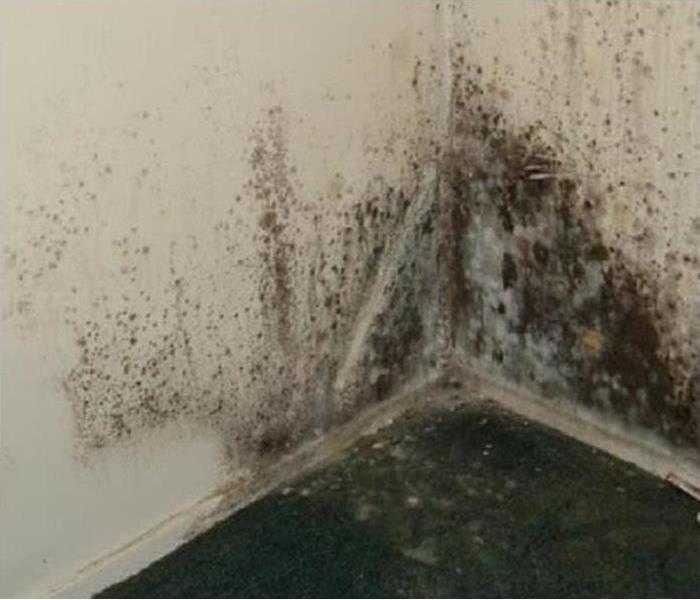Some Things You Should Know About Bradenton Water Damage And Mold
6/15/2021 (Permalink)
 While bleach can erase the unsightly black marks of mold spores on the surface, the fungus is still present in the wall.
While bleach can erase the unsightly black marks of mold spores on the surface, the fungus is still present in the wall.
Using Bleach On Mold After Water Damage
If you have water damage in your Bradenton home, you've probably thought about the possibility of mold. If you have already discovered mold , do not use bleach to try and clean it.
The idea that bleach kills mold spores is simply not true. Unfortunately that idea has made its way into the do-it-yourself community, leading homeowners and property managers to believe that they can actually kill a mold problem by spraying a bleach solution onto a wall and then wiping it clean.
While the area appears to be clean and rid of the black fungus on the surface, this particular method actually makes the situation worse.
When mold and bleach interact, the mold spores react as if they are being attacked. Spraying the fungus down with bleach causes the mold to shoot off spores to protect itself. So as you are wiping the surface, you are actually spreading the mold spores further out. If the cloth is used in other areas of the home, it can spread the mold to areas that were unaffected, otherwise known as cross contamination.
Mold thrives on moisture, and since the primary component of bleach is water, the solution actually feeds the fungus rather than kill it. Another reason bleach is no match for mold is because its chemicals, which include chlorine, do not penetrate through the porous areas of the sheetrock or wood where the deep roots of the mold spores are located.
Still another reason not to use bleach to combat a mold problem is because the solution is highly acidic, which can threaten the integrity of porous materials. The acidity levels in bleach wreak havoc on the fibers that compose most home building materials such as drywall and baseboard. And not only will the bleach compromise the integrity of the material, it will spread the mold spores to otherwise unaffected areas. Because this damage is occurring beneath the surface, it goes unseen and unnoticed.
While bleach can erase the unsightly black marks of mold spores on the surface, the fungus is still present in the wall. Mold has deep roots and can permeate to the outer areas of the wall, as it seeks out moisture and a food source. Since bleach can only clean up the ugly surface marks and not completely kill the roots, it is not a recommended solution for mold remediation.
SERVPRO of West Bradenton / Anna Maria never uses bleach on any of its mold remediation projects. Our professionally trained crews understand the problems that can arise out of using bleach on mold spores. With over 25 years of experience responding to property owners and managers with mold in their homes or businesses, our staff can properly and completely clean up any mold situation with the right products and equipment.
As a certified mold remediation company, SERVPRO requires our staff to be trained and able to explain the different types of methods that can be used to clean up mold for our customers. We never sell our services based on fear but rather on information.
If you need any help with eradicating a mold issues please feel free to contact us for an estimate. SERVPRO West Bradenton / Anna Maria (941) 792-7715






 24/7 Emergency Service
24/7 Emergency Service